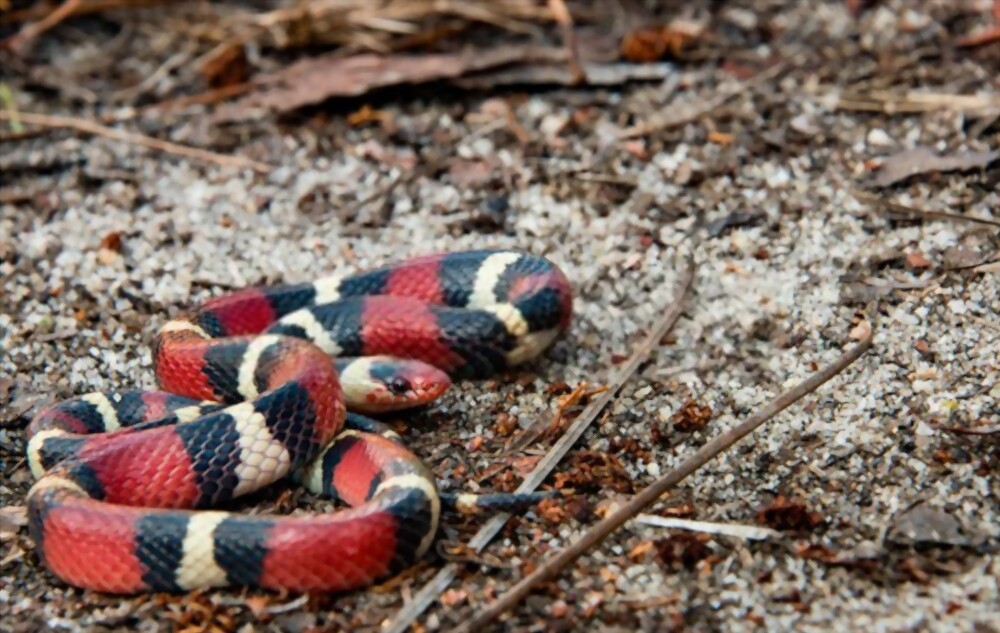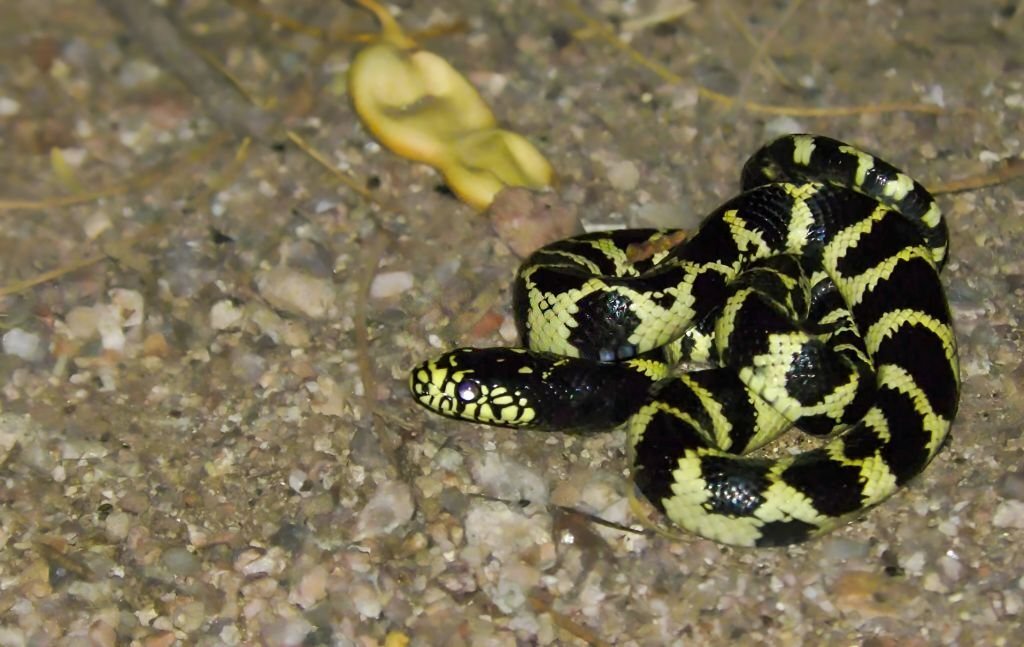What are the King Snake Louisiana?
King snakes are a species of non-venomous snake in the genus Lampropeltis. They are found mainly in North and Central America, as well as parts of South America. These snakes can be identified by their distinctive black, white, and red bands that cover their bodies. King snakes have a wide variety of habitats that they live in, including deserts, forests, swamps, grasslands and suburbs. They typically eat small rodents, lizards, birds and insects. King snakes are also known for their impressive strength and ability to constrict their prey. Due to their adaptability and aggression towards predators they have become one of the most popular pet snake species. The Louisiana king snake is a non-venomous species of king snake commonly kept as a pet.

Overview
The Louisiana King Snake, or Lampropeltis getula means, is a species of nonvenomous snake native to the southeastern United States. It can be found in many different habitats and regions, but it is most commonly found in lowland forest and swamps. The Louisiana King Snake has a wide variety of color variations, from black to tan, brown and yellow. It is generally a non-aggressive snake that will often coil into a ball when threatened. Louisiana King Snakes typically reach between 2 and 4 feet in length, with some reaching as large as 7 feet. They feed on smaller rodents, lizards, frogs and other small animals.
Habitats and Diet
King snakes have a wide variety of habitats that they live in, including deserts, forests, swamps, grasslands and suburbs. They typically eat small rodents, lizards, birds and insects. King snakes are also known for their impressive strength and ability to constrict their prey. This makes them an attractive pet species for those with experience handling snakes. With that said, king snakes need to be provided with a suitable habitat and diet in order to stay healthy. This includes providing them with an appropriately sized enclosure, substrates such as bark chips or mulch, branches for climbing and hiding spaces for security. When it comes to their diet, King Snakes should be fed mice or rats of an appropriate size, thawed and frozen or alive. King Snakes will also benefit from occasional supplements such as calcium powder or vitamin drops. It is important to research the particular needs of a King Snake before purchasing one in order to ensure that you can provide them with the best care possible. With dedication, patience and a bit of knowledge, keeping a King Snake as a pet can be a rewarding experience!

Popularity as Pets
King Snakes are popular pets for many reasons. They are relatively low-maintenance, requiring minimal space and feeding requirements. They also have a long life span, living up to 20 years in captivity when properly cared for. King snakes do not require as much interaction with their owners as other reptiles or animals might.
Role of the Louisiana King Snake in their Ecosystem
Louisiana king snakes play an important role in their ecosystem. They are voracious predators, consuming rodents, small mammals, lizards, amphibians, and other snakes. This helps to keep the population of these creatures in balance. Louisiana king snakes also serve as a food source for larger predators such as hawks or coyotes. By keeping the populations of their prey in check, Louisiana king snakes help to maintain healthy and balanced ecosystems. Additionally, they create a buffer between other native species and non-native species that could pose a threat to them. By controlling the numbers of certain invasive species, such as rats or bullfrogs, King Louisiana snakes can help to preserve the natural habitats of other animals.
Louisiana king snakes have an important role to play in the wild, and they can also make great pets. With their distinctive colors and patterns, these snakes can be fascinating creatures for snake enthusiasts to observe and care for. They are relatively easy to feed, and require minimal space or upkeep when compared to some other reptile species. While they may look intimidating, Louisiana king snakes are generally docile and can be handled with caution. Keeping these snakes as pets can be a rewarding experience for those who take the time to understand their behavior and needs.

Relationship of Louisiana King Snake with human
Louisiana King Snakes are generally not aggressive towards humans and can make a great pet for those who take the time to research their care needs. They are very active, require frequent interaction and handling, and thrive in an environment where they have plenty of space to explore and hide. For these reasons, Louisiana King Snakes may not be suitable pets for everyone. When choosing a King Louisiana Snake as a pet, it is important to remember that these snakes are wild animals and require an experienced owner who understands their natural behavior and needs. Additionally, due to their predatory nature, Louisiana King Snakes should never be released into the wild as they can easily become an invasive species.
Lifespan of Louisiana King Snake
The lifespan of a Louisiana King Snake can vary depending on the conditions in which it is kept. Wild Louisiana King Snakes typically live shorter lives than captive-bred specimens, with an average lifespan of five to seven years. Captive-bred Louisiana King Snakes, however, can live up to fifteen years if they are given proper care.
How to Safely Interact With a Louisiana King Snake
It is important to remember that the Louisiana King Snake is a wild animal and should be treated with respect. It is not recommended to interact directly with the snake, but if it must be handled, use extreme caution. Make sure to wear thick gloves and long sleeves for protection. When handling the snake, avoid sudden movements which could startle or injure it. Always supervise children if they are interacting with the snake, and be sure to keep the habitat secure. It is also important to wash hands before and after handling the snake in order to reduce the risk of transferring any bacteria or diseases to them. When cleaning the enclosure, use a reptile-safe cleaner and make sure that all debris and droppings have been removed. Ensure that the snake is given a warm, comfortable environment with plenty of places to hide or crawl around in. Provide enough substrate for the snake to burrow into, as well as branches or rocks for them to climb on. Lastly, always provide clean water in a bowl large enough for your pet to soak in if desired. With the proper care and attention, a pet snake can be a rewarding and enjoyable companion for many years to come.

Interesting Facts About the Louisiana King Snake
The Louisiana king snake is a non-venomous species of colubrid snake native to the southeastern United States. It is known for its ability to withstand extreme conditions and its propensity to eat other snakes, including venomous species like rattlesnakes. Louisiana king snakes have an interesting array of behaviors and biological traits that make them unique among their peers. Here are some interesting facts about the King Louisiana Snake:
• The Louisiana king snake is one of the largest species of colubrid snakes, measuring between 2 to 6 feet in length.
• King Louisiana Snake can be found in a variety of colors, including yellow, orange, black, and brownish-red with varying patterns.
• Louisiana king snakes eat a variety of prey items, including small mammals, birds and eggs, other snakes (even venomous species like rattlesnakes), lizards, frogs, and insects.
• Louisiana king snakes are excellent climbers and can often be found in trees or on fences.
• They become dormant during the winter months and can often be seen in hibernation piles with other snakes.
• Louisiana king snakes are nonvenomous, but they will bite when threatened or handled improperly.
• The King Louisiana Snake is not aggressive and prefers to avoid confrontation if possible. They make wonderful pets for those who understand their behavior and needs.
• These snakes require a large enclosure and should be provided with plenty of hiding spots, logs, rocks, and other items for them to explore.
• It is also important that the enclosure temperature remains between 75-85 degrees Fahrenheit during the day and slightly cooler at night. A heat lamp or pad will help maintain proper temperatures.
• Louisiana king snakes are not picky eaters, but they should be fed a variety of food items such as mice, rats, lizards, and other small reptiles.
• They are relatively easy to care for and can live up to 15 years in captivity with proper care.
• King Louisiana Snakes make wonderful pets if you understand their needs and behavior.
Different Color Variations of the Louisiana King Snake
• The Louisiana king snake has a variety of color variations, including tan, grey, black and white as well as red, yellow and orange.
• They have black and white checkered pattern that is unique to their species. Some morphs may even have stripes or blotches of other colors on the sides of their bodies.
Read an article on the Top 8 Venomous Florida Snakes
Read for more information about Louisiana King Snake

